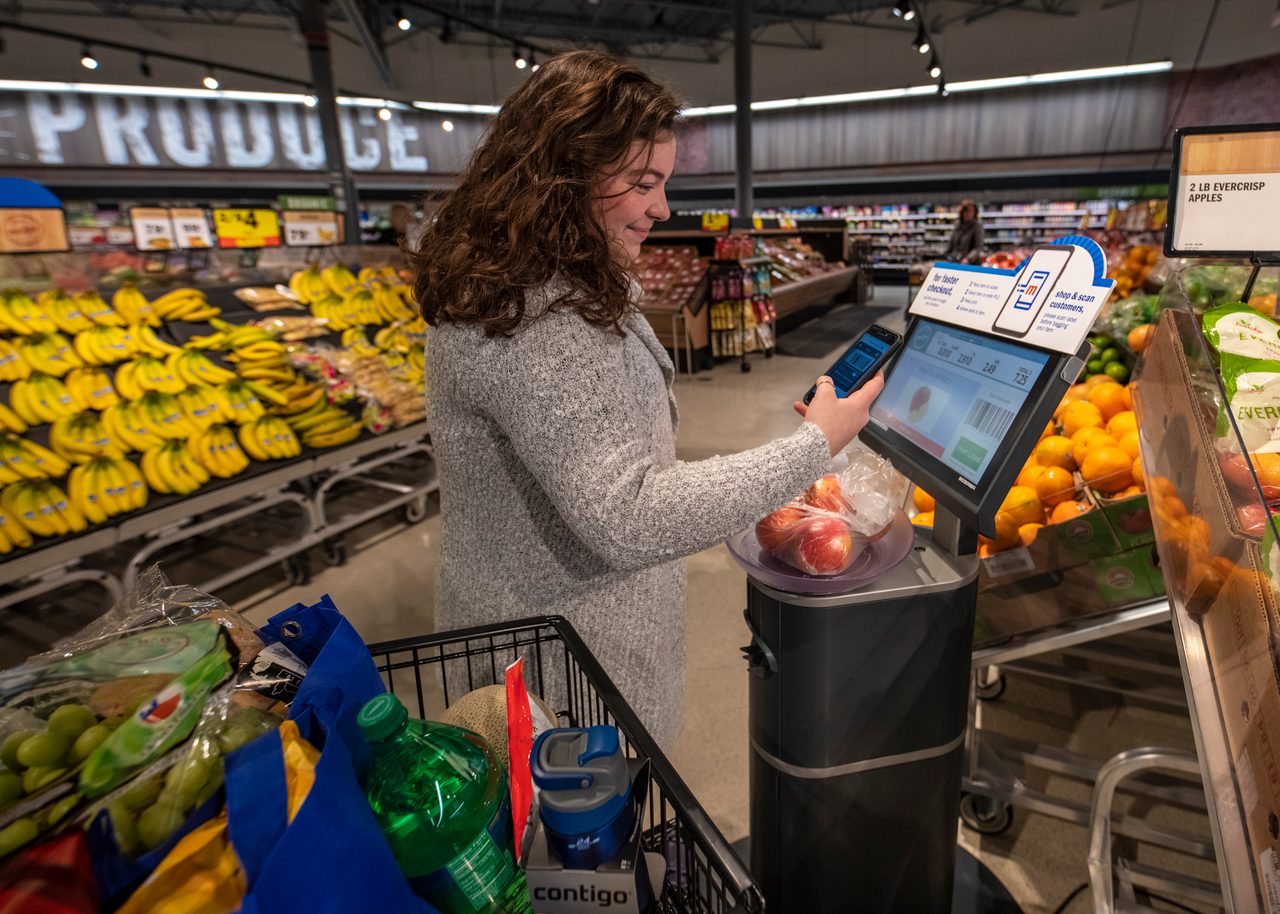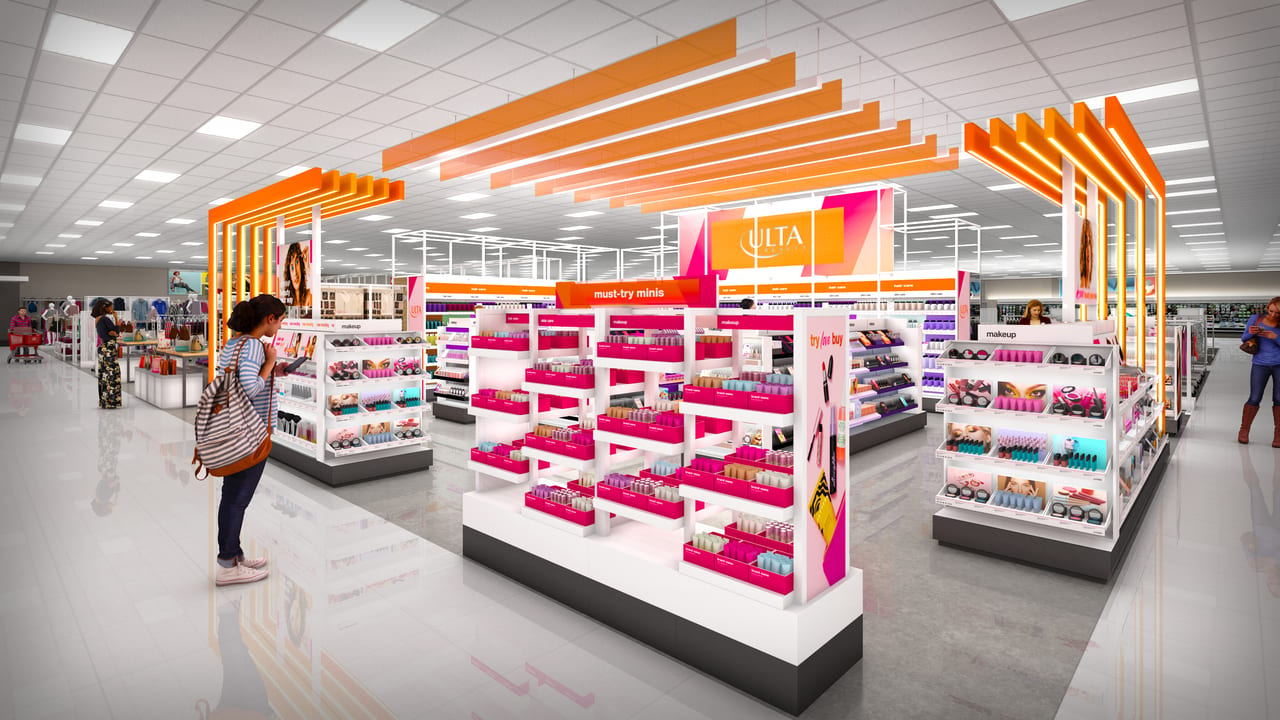Channel
Strategies
Launched in August 2020, Walmart + offers perks similar to Amazon’s Prime, offering free shipping and additional benefits such as discounts on fuel. (Image courtesy of Walmart Inc.)
A one-stop shop
Mass merchandisers capitalize on diverse product mix, eCommerce
By Lauren Sabetta
Although the mass merchandiser channel has been driven by this year’s broader economic recovery, consumers are taking advantage of the channel's one-stop-shop format and improved capabilities to deliver groceries and other products.
Jacqueline Hiner, senior analyst, and Brigette Thomas, lead analyst, at Los Angeles-based IBISWorld, note that as other online platforms, particularly Amazon.com, rapidly have improved their capability to deliver groceries and a variety of other products, mass merchandisers have been driven to offer similar services from online platforms.
“Economic recovery and expanding eCommerce sales are expected to drive mass merchandiser performance,” the IBIS analysts explain. “Grocery delivery has already become more widely accepted during the pandemic, which is expected to continue into the outlook as consumers gain confidence in mass merchandiser delivery channels.”
Further, by expanding online sales, mass merchandisers are not only able to reduce in-store labor costs, but also pass price savings on to customers and reach a wider range of customers, the analysts note.
Meijer’s Shop & Scan App allows customers to shop and bag as they go. The Shop & Scan technology works through the free Meijer Mobile App that customers can download through the Apple or Android App stores. (Image courtesy of Meijer Inc.)

As Bentonville, Ark.-based Walmart Inc. brought its Walmart Grocery and Walmart App experiences together in 2020, consumers easily were able to shop everything from fresh groceries to electronics and more. In fact, Walmart Inc.’s, “Q2 FY22 Earnings” report notes that the company’s U.S. second quarter comparative sales grew 5.2%, while its eCommerce sales grew 6% and 103% on a two-year stack.
“We grew market share in U.S. grocery, added thousands of new sellers to our marketplace, rapidly grew advertising businesses around the world, and we’re finding innovative ways to commercialize our data and build technology,” said Doug McMillion, president and CEO of Walmart, in a statement. “We have a unique ecosystem of products and services designed to serve customers in broader, deeper ways, and we’re grateful to our associates for making it all happen.”
McMillion added that, as Walmart had another strong quarter in every part of its business, global eCommerce sales are on track to reach $75 billion by the end of the year, further strengthening Walmart’s position as a leader in omnichannel.
Increased competition
As mass merchandisers’ supercenters have served as a go-to spot for consumers, particularly during the past year, IBIS’s Hiner and Thomas note that supercenter stores have needed to compete with warehouse centers and specialized retailers that have been able to maintain a loyal customer base.
“During the pandemic, many consumers have opted for a one-stop-shop format to reduce time spent running errands and potentially mitigate exposure risk to the coronavirus,” the analysts explain. “However, these stores have needed to compete with warehouse centers, which often offer discounted products in bulk, further enabling consumers to fulfill grocery needs while also mitigating trips to the store.”
“As eCommerce sales are expected to comprise 23% of total retail sales by 2025, the continued growth of the online channel will further impact how consumers shop mass merchandisers. Overall eCommerce retail sales for 2021 will remain elevated, but will fall below the highs seen in 2020.”
— Vince DiGirolamo, retail and eCommerce reports director for Mintel
Additionally, despite supercenters’ capability to offer a larger assortment of goods, specialized retailers, such as Trader Joe’s, have increased competition by continuing to offer low prices, high quality and seasonal products. However, while the industry does compete with these specialized stores, the channel is not significantly disrupted, according to Hiner and Thomas.
One example of supercenters mitigating increased competition is Grand Rapids, Mich.-based retailer Meijer Inc., which operates 255 supercenters and grocery stores across the Midwest region.
Meijer, known for hundreds of varieties of farm-fresh produce, 150 USD-certified organic meats, and its online nationwide bulk shopping program Grocery By The Case, expanded its one-stop-shopping concept in Ohio and Indiana with the opening of three new 155,000-square-foot supercenters, earlier this year. The new Meijer stores also offer a pharmacy and general merchandise items more often found in specialty stores.
In May, the new Meijer supercenters opened in Seven Hills and Boardman, Ohio, and Westfield, Ind. These supercenters provide Shop & Scan, which permits shoppers to scan barcodes through a mobile app and bag their items as they shop. Also available are Meijer Home Delivery and Pickup services. The new stores offer a safe and convenient shopping experience with digital solutions that allow consumers various ways to shop for everything they need in one store, the company says.
In November 2020, Target announced teaming up with beauty retailer Ulta to offer a shop-in-shop experience that offers Ulta products and expertise to Target shoppers. (Image courtesy of Target Corp.)

”These new stores reinforce our ongoing commitment to serving the needs of communities at a time when everyone is looking for a one-stop-shopping experience,” said Rick Keyes, president and CEO of Meijer, in a statement. “We look forward to providing a customer-focused store that offers fresh options and innovation to help reshape how customers shop for the groceries and items they need while keeping their families safe.”
Affordability, convenience remain key
Experts agree that eCommerce is undeniably the way of the future for retail, yet Chicago-based Mintel’s “US Online Grocery Retailing Market Report 2021” describes the consumer shift toward online grocery shopping as more out of necessity due to the pandemic. Although some consumers will revert to in-store shopping once the pandemic ends, many will hold on to their new routines because of the value and convenience of online platforms.
Vince DiGirolamo, retail and eCommerce reports director for Chicago-based Mintel, notes that although it is likely consumers will do more of a mix of in-store and online shopping, physical retail will continue playing a crucial role in consumers’ omnichannel approach to shopping.
“As eCommerce sales are expected to comprise 23% of total retail sales by 2025, the continued growth of the online channel will further impact how consumers shop mass merchandisers. Overall eCommerce retail sales for 2021 will remain elevated, but will fall below the highs seen in 2020,” DiGirolamo explains. “This shift will occur as in-store shopping resumes, and this will be largely predicated on the state of the economy, as well as the continued rollout of the vaccine and impact of the Delta variant.”
Moreover, as mass merchandisers continue to improve upon online platforms, DiGirolamo says Mintel expects to see the channel focus on improving the in-store experience through innovations and partnerships designed to keep consumers returning to stores.
For example, Target teamed up with beauty retailer Ulta Beauty Inc., in November 2020, to offer consumers a shop-in-shop experience, and in May, Walmart and Gap announced their partnership, with the clothing specialist choosing the mass merchandiser as the retailer to exclusively sell its new home furnishings line, DiGirolamo highlights.
“Walmart also launched its loyalty program Walmart+ in August 2020, offering perks similar to Amazon’s Prime, including free shipping and additional benefits such as discounts on fuel,” DiGirolamo adds. “All of these efforts contribute to mass merchandisers being one of the most-shopped type of retailer.”
Additionally, the affordable prices, range and variety of products offered at mass merchandisers will continue to be key drivers for consumers.
DiGirolamo notes that Mintel’s research finds that 74% of consumers shop at mass merchandisers because the prices are affordable; 64% because they have a large product assortment; and 42% because they can shop for the whole family.
“They are able to affordably shop at one retailer across categories for various individual and/or family needs.” DiGirolamo says. “These various elements of value will keep consumers shopping at mass merchandisers moving forward.” BI
